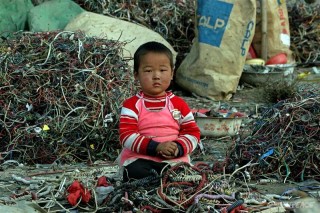The fascination with electronic gadgets is ever increasing. Be it the television, mobile phone, camera or any other gadget, technological advancement is taking place at a lightning fast pace. New models are being introduced at regular intervals in order to stay competitive in this market of electronics. But have you ever wondered where your used or obsolete gadgets go? The e-waste generated is either burnt at very high temperatures ranging from 900 to 1000 degrees Celsius or it is shoved into landfills.
Most of the developed countries transport their e-waste to developing countries in order to prevent their images from being tarnished due to excessive use of carbon credits. And at the center of this trade lies Guiyu, a town of the Guangdong province in China, which is known as the e-waste capital of the world. All the electronic waste of the West and also the Asian economies is transported to this “electronic junkyard”, a name by which Guiyu is commonly referred to. This has had an impact on both the demographic as well as the environmental conditions of this town.
The soil has become saturated due to it being a mixture of all sorts of metals. The air is toxic due to the burning of various electronic parts in order to extract metals like gold. But the worst impacts are felt by the residents of Guiyu. The saturated soil has led to various metals mixing with the groundwater available. The water is now contaminated with lead, chromium and tin and is no longer safe for drinking purposes. It has resulted in the lead content in the blood of Guiyu’s children to be 54% higher than average and has caused 88% of the children there to suffer from lead poisoning. High lead concentrations also impact the IQ and functioning of the central nervous systems of these children.
The 150,000 labourers are not just expected to work in these hazardous conditions, but are also exploited in more than one way. Their job involves assembling 1.5 million pounds of electronic waste parts by working for more than 16 hours a day in return of a remuneration of US $1.50 per day. And most of this money is made by recovering valuable metals such as gold and silver from the e-waste.
A cost-benefit analysis of the same proves that the costs in terms of health risks and hours spent labouring exceed the profits from working as an e-waste labourer by an exceedingly high margin. However, the impoverished conditions of these workers leave them with no choice but to continue to work in such hazardous conditions. There is not much we can do as individuals on a large scale. However, as citizens of this world, we can take small steps such as reusing and recycling the e-waste products that we use. It is only these small steps, which can result in a larger change which will free these e-waste workers off their bondage.


































